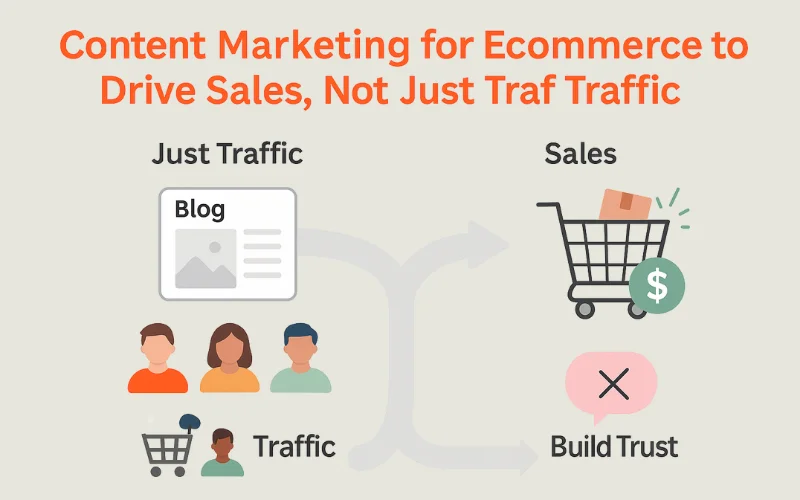Introduction
So, you’ve noticed a concerning trend: your organic reach on social media is plummeting, and your carefully crafted content is suddenly reaching far fewer people? Indeed, a drop in organic reach is a major frustration for marketers, as it directly impacts brand visibility, engagement, and ultimately, your ability to connect with your audience without paying for ads. This isn’t an uncommon problem, given algorithm changes, platform saturation, and evolving content trends. Consequently, this guide is designed to help you diagnose why your organic reach might be dropping and, more importantly, provide actionable strategies to fix the underlying issues and boost your visibility once again. Therefore, let’s explore common culprits and effective solutions.
Diagnosing Platform-Driven and Content-Related Reach Issues
Investigate potential algorithm changes and platform saturation
Social media platforms frequently update their algorithms, which can significantly impact how your content is prioritized and distributed. For example, Instagram might suddenly favor Reels over static images, or Facebook might adjust how it shows content from Pages versus Groups. Furthermore, as platforms become more crowded, the competition for feed space intensifies, naturally leading to reduced organic reach for individual accounts. Therefore, stay informed about platform updates and understand that some decline might be due to these broader shifts. Your strategy, then, needs to adapt to what the platform is currently rewarding.
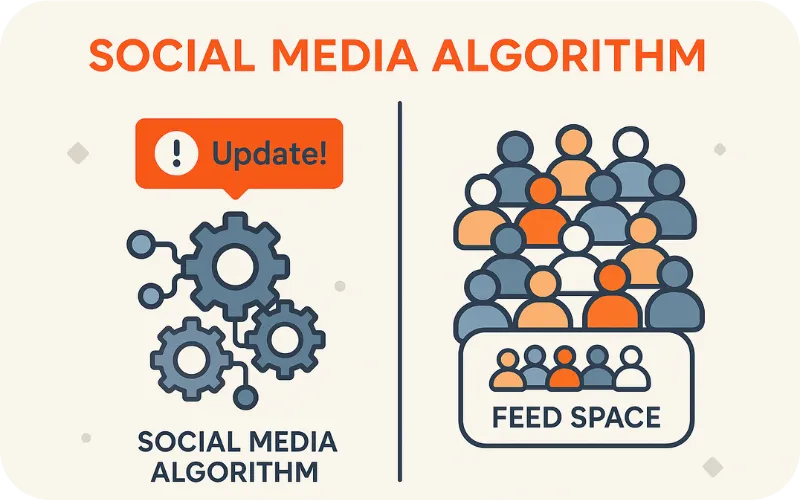
Critically assess your content quality, relevance, and consistency
Often, a drop in organic reach stems directly from the content itself. Ask yourself honestly:
- Is your content low-quality, repetitive, or generic? Poor visuals or uninspired storytelling won’t capture attention.
- Does it provide real value or address your audience’s needs and interests? If not, they won’t engage.
- Are your hooks weak, and do you lack clear Calls to Action (CTAs)? Give people a reason to interact.
- Is your branding and messaging inconsistent? This can confuse followers.
Addressing these content-related issues, for instance, by focusing on high-value, relevant, and consistently branded posts is crucial for improving your organic reach.
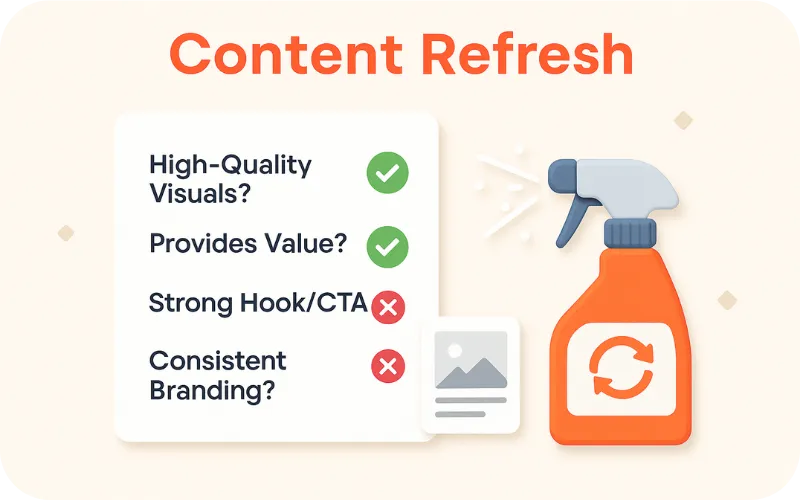
Addressing Audience, Timing, and Optimization Reach Problems
Analyze audience fatigue, targeting, and past engagement history
Your audience’s response (or lack thereof) significantly impacts your organic reach. Consider, for example:
- Audience Fatigue: Are you over-posting or covering the same topics too often, leading to boredom?
- Wrong Target Audience: Have your followers’ interests shifted, or are they no longer the right fit for your current content?
- Low Engagement History: If your previous posts received poor interaction, algorithms might deprioritize your future content.
Therefore, understanding your audience analytics, perhaps even surveying them, and focusing on re-igniting engagement on current posts can help reverse a decline.
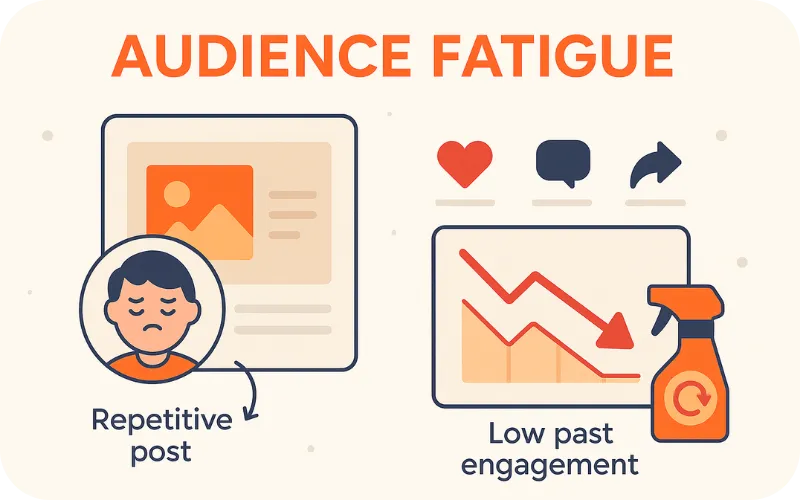
Optimize your posting schedule, frequency, and content discoverability
When and how often you post, along with how optimized your content is for discovery, play a big role in organic reach.
- Inconsistent Posting: Long gaps can hurt momentum. Aim for a regular schedule.
- Non-Optimal Times: Are you posting when your audience is least active? Check your analytics.
- Content Volume: Too much can annoy; too little leads to invisibility. Find the right balance.
- Poor Hashtag/Keyword Use: Are you using irrelevant, banned, or overly broad hashtags? Not optimizing for keywords or alt text on relevant platforms (Instagram, Pinterest, LinkedIn)?
- No Video Captions: Reduces accessibility and watch time for silent viewers.
Fixing these optimization issues, for instance, can significantly improve how many people see your content.
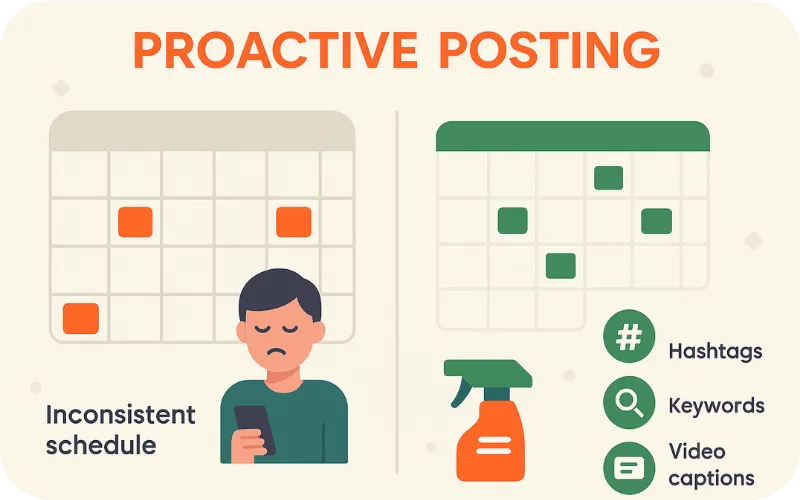
Fixing Engagement, Technical, and External Factor Impacts on Reach
Enhance your community engagement and interaction strategies
Social media platforms reward interaction and conversation. If your organic reach is suffering, evaluate your engagement practices.
- One-Way Communication: Are you only broadcasting content without responding or asking questions?
- Ignoring Comments/DMs: This erodes trust and discourages future interaction.
- No UGC/Community Involvement: Missing opportunities to build trust and leverage your audience’s content.
Actively fostering a community, for example, by responding thoughtfully, encouraging discussions, and involving your audience can signal to algorithms that your content is valuable and engaging.

Audit technical profile aspects and adapt to external factors
Sometimes, organic reach issues can stem from unoptimized profiles or external shifts. Check, for instance:
- Unoptimized Profile/Bio: Is it clear, compelling, and does it guide visitors effectively?
- Unclear Thumbnails: Especially for video content.
- Broken Links/Dead-End CTAs: These frustrate users and signal poor quality.
- Not Using Platform Features: Ignoring Stories, Polls, etc., limits variety and potential reach.
Furthermore, be aware of external factors like major trending content overshadowing yours, niche interest shifts, or even seasonal dips in user activity. While you can’t control these, you can adapt your strategy, perhaps by temporarily shifting content focus or managing expectations.
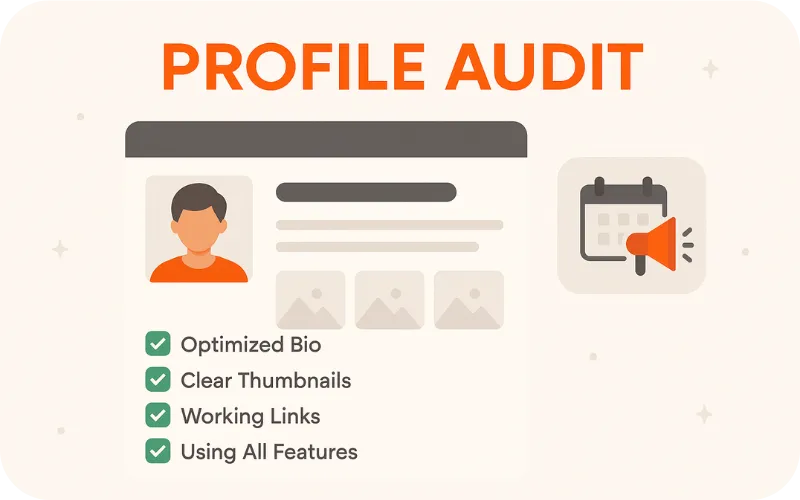
Tips
- Primarily, focus on creating genuinely high-quality, valuable content that your specific audience will appreciate and want to share. This is the best long-term fix for organic reach.
- Also, diversify your content formats (e.g., video, carousels, stories, text posts) to keep things fresh and appeal to different algorithm preferences.
- Furthermore, encourage authentic engagement by asking questions, running polls, and responding to comments thoughtfully.
- Additionally, analyze your social media insights regularly to understand what content types, topics, and posting times perform best for your audience.
- Importantly, stay updated on algorithm changes for the platforms you use most actively.
- Consider cross promoting your social media content on other channels like your email newsletter or website.
Warnings
- Crucially, avoid engagement bait tactics (e.g., “like if you agree,” “tag 3 friends to win”) as platforms are cracking down on this, and it can hurt your organic reach in the long run.
- Also, don’t buy followers or engagement; these are usually bots or unengaged accounts that will ultimately harm your metrics and credibility.
- Furthermore, be patient; rebuilding or significantly improving organic reach often takes consistent effort over time.
- Finally, don’t get discouraged by one or two underperforming posts. Look at overall trends and keep experimenting.
Things You’ll Need (To fix and boost organic reach)
- Access to your social media platform analytics, of course.
- Additionally, a clear understanding of your target audience and their preferences.
- A content creation plan focused on quality and value.
- Time dedicated to engagement and community management.
- Perhaps, social media scheduling or analytics tools.
- Lastly, a willingness to adapt, test, and learn.


